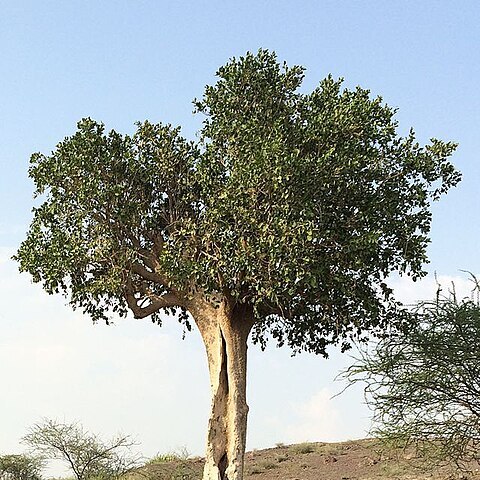An evergreen shrub. It grows 10 m tall. The bark is green or grey and patchy. The leaves are opposite and grey-green. They are thick and smooth. The leaves can be 7 cm long. There is often a notch at the tip. The flowers are small and white. The fruit are oval and 2 cm long. They have 1 or 2 flat seeds.
